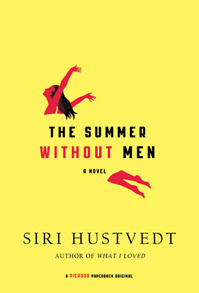
With the feminist-sounding title and the bright yellow cover that screams “beach read,” it is easy to write off The Summer Without Men at first glance as the literary version of a chick-flick. As I opened the cover to read the synopsis, I was expecting an introduction to a Carrie Bradshaw-esque protagonist on the hunt for love. Instead, I read about Mia Fredrickson, a woman in crisis after her husband of thirty years asked to “pause” their relationship. Maybe I was surprised that author Siri Hustvedt’s novel deviated from the typical plot that I was expecting, or maybe I find guilty pleasure in stories centered around middle-aged women restarting their lives after a nasty breakup (e.g. Under the Tuscan Sun or Eat, Pray, Love), but either way, I was intrigued.
True to my track record with middle-aged rom-com stories, I found great enjoyment in reading The Summer Without Men. Hustvedt employs a unique style of storytelling in this novel: the novel is written as if written by Mia herself. She even goes so far as to explain why she chooses to recount stories in certain ways, reflecting on the occasional uselessness of chronology. The book’s style is also unorthodox as the author heavily weaves poetry into prose, including poetry authored both by Mia and famous poets. It would be easy for the transition between prose and poetry to read awkwardly, but I think Hustvedt does a great job of combining the two forms of writing. In fact, the poetry serves to enrich the story, eliminating any chance of the novel being as superficial as I first thought it might be.
What I also loved about this book is that it is a feminist text—not in a man-hating, female-superiority kind of way, but because of the way that Mia analyzes relationships between women and men, relationships between women and women, and how both of these relationships are influenced by women’s socially-determined roles. Mia observes females of every age group: her wild three-year-old neighbor Flora, her twelve- and thirteen-year old poetry students, her twenty-something mother-of-two neighbor, her middle-aged self, and her elderly mother and mother’s friends who reside in the local nursing home. This focus on females at every age is subtle, but it shows the mental, physical, and sexual transformations females undergo as they grow up and the various struggles that come with each phase of life.
In less than two hundred pages, this novel deals with many, if not all, issues that every female faces, but it is relayed in a way that doesn’t seem cliché. The reader grasps the importance of each struggle Mia undergoes or observes without the cheesiness that often goes along with these stories of self-discovery. I think this book would be enlightening for both men and women to read in order to better understand the universal experiences of love and loss.
